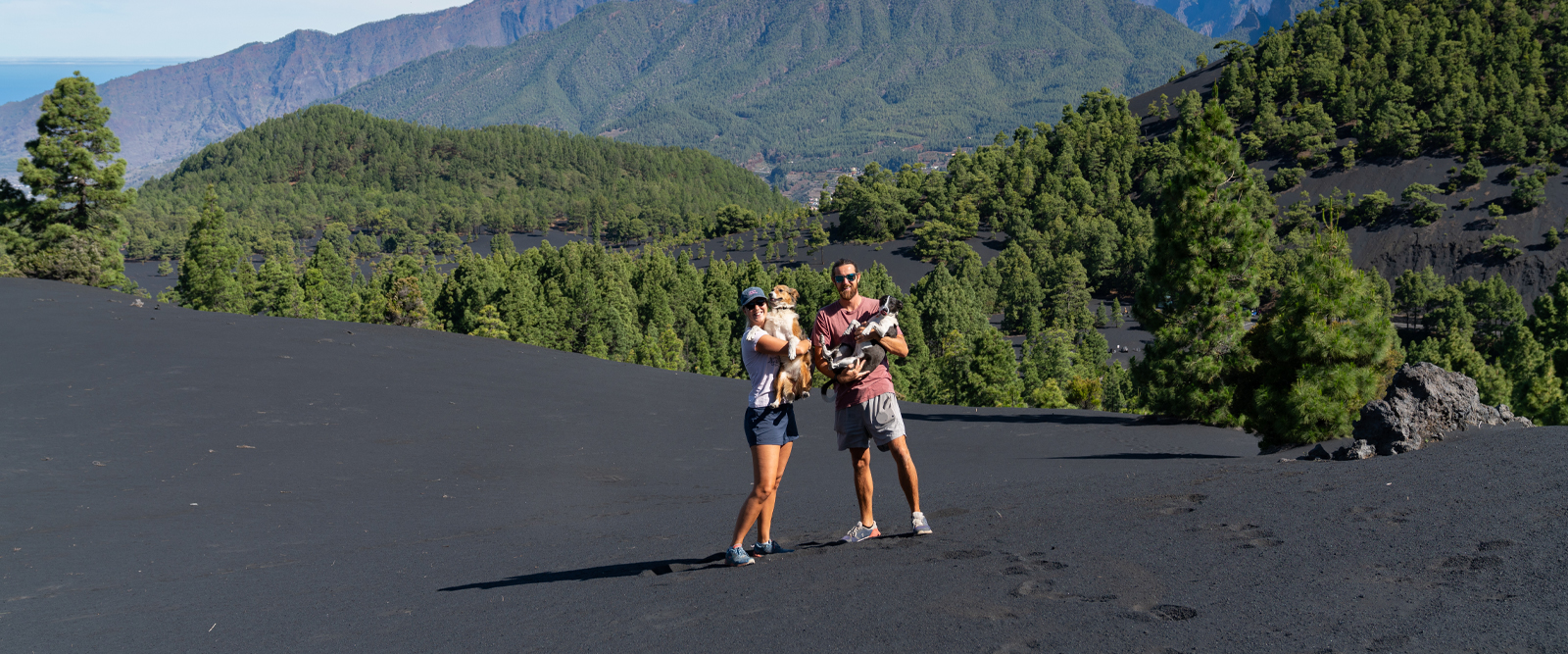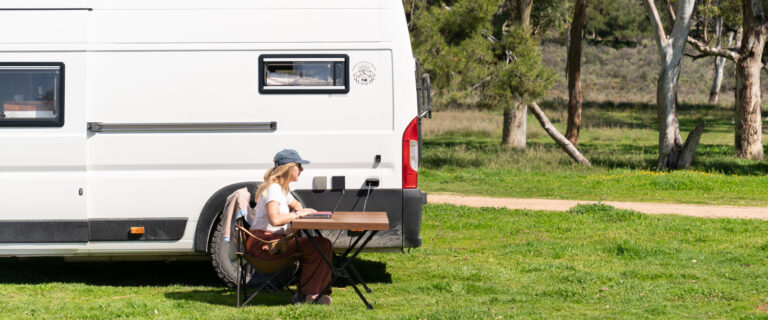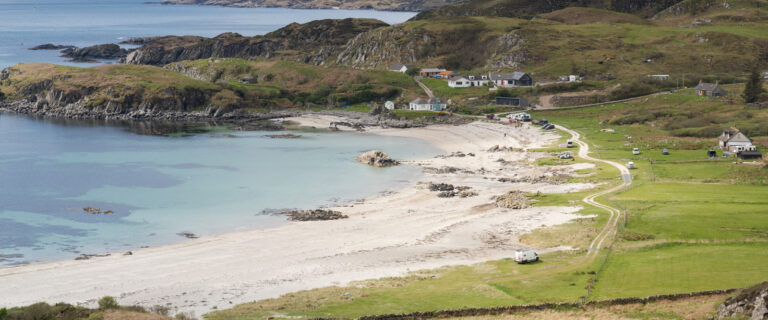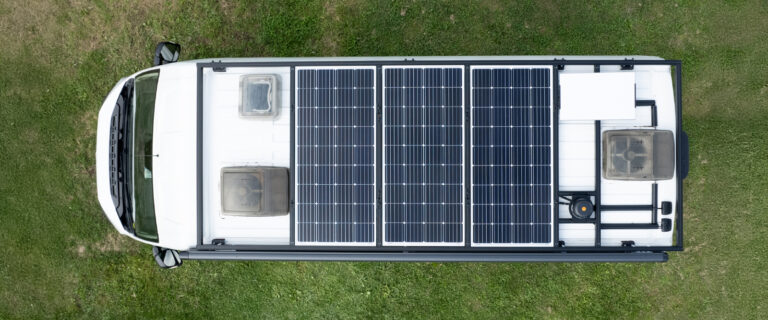We are currently living across Europe and Asia fulltime with our two Welsh rescue dogs Rory and Jeannie. Having got them Irish pet passports post Brexit (more details here). In this post we’ll be sharing some of our tips, feedback and considerations for living on the road full time with a furry four legged companion. We’ve tried to cover (what we think) are the most important topics, whether you are already living on the road with your dogs or considering it in future. After spending 18 months travelling every week in the van we moved in fulltime in January 2022, right in the depths of winter. Hopefully, this content will be useful regardless of if you’re living in a van, a motorhome, caravan or on a boat. We’ve even got some fantastic tips and experiences from other vanlifers to share at the bottom of the article – be sure to check those out!
Do your lifestyles align?
Before bringing your dogs on a new adventure it’s important to consider both their needs and your own. Will you be spending most of your time in dog friendly areas? Will you be leaving them alone for long periods of time? Do they adapt well to new surroundings or require certainty and routine to mitigate any anxiety they might have?
There is a lot to think about, more so than just having dogs at home. The answers to these questions are entirely dependent on each individual, their circumstances and the dog in question. For us we always travelled frequently with the dogs and were away most weekends in the van prior to living fulltime, they adjusted to the space, travel and having a new ‘home’ every time the sliding door opened. One of our dogs Rory can get quite anxious about certain surroundings and noises so we’ve learnt areas and things to avoid to help her from getting overly sensitive. Thankfully both of our dogs see the van as a safe space and we think they find comfort knowing that they always have the same places to sit and sleep regardless of what’s outside.
They are both very comfortable being left for several hours in the van when we are not with them, although this is fairly uncommon as we both live and work from the van. Normally they would just be left alone during meals out, shopping/chores or if we are doing an activity they can’t be involved in. At the time of moving into the van both of our girls were around 5 years old, they are still incredibly active and love the outdoors. We do a lot of hiking together and even on busier workdays, we make sure to go on a couple of walks. During work hours they tend to sit or sleep next to us whilst we work or in Summer they’ll hang outside the van. You might want to consider bringing some of their favourite items into the van with you to make them feel at home. These could be dog beds, blankets or their favourite toys.
If they get particularly dirty, or famously if Jeannie has been rolling in things she shouldn’t be then we use the outdoor shower at the back of the van to hose them down. We have been using the dog shampoo bars from Zero Waste Path for this, they lather up extremely well and are 100% natural so there is no harm in using them outside.
One thing we appreciate about owning dogs is that they provide some form of routine. They always need to go out and be fed at similar times, regardless of the weather. This is good (and bad) in winter and in bad weather conditions as it stops you from sitting inside all day.
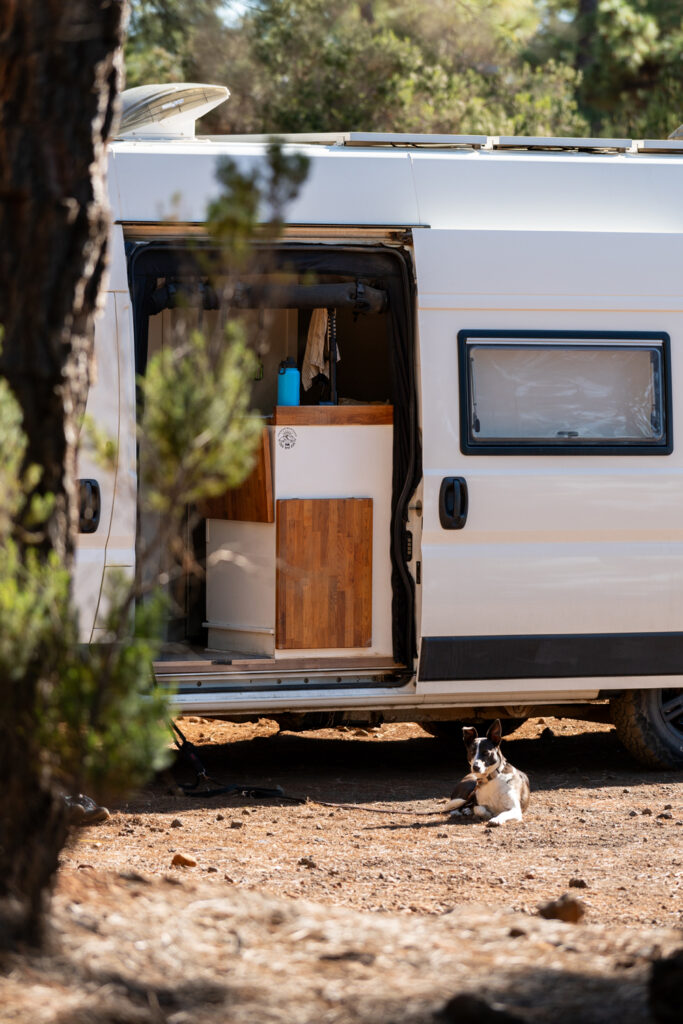
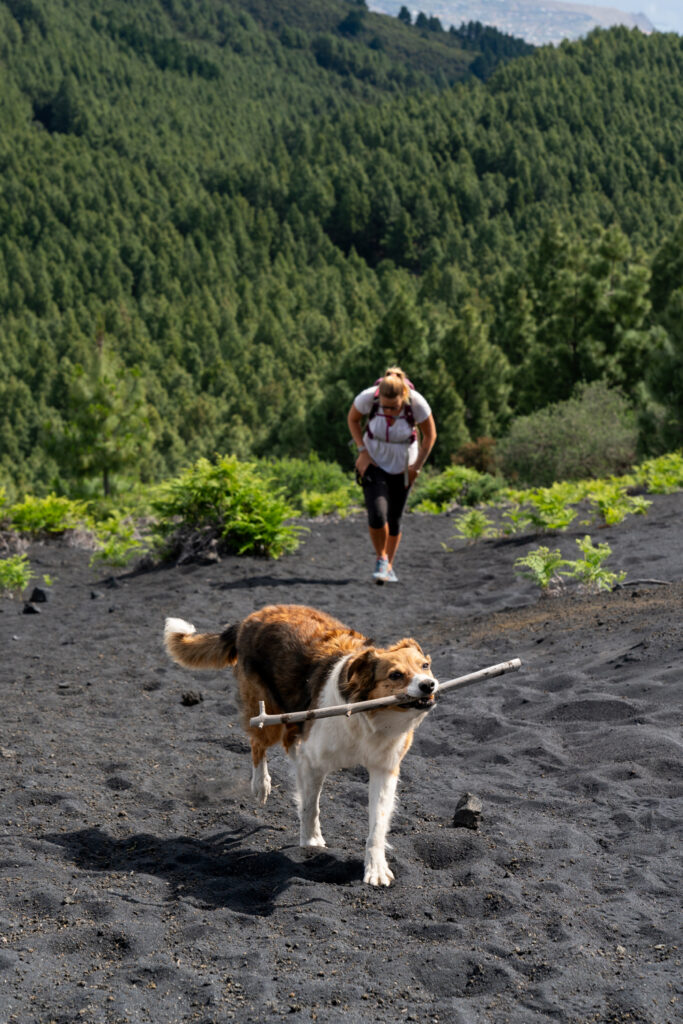
Dirt and damp
This is a big one. Do not do vanlife with a dog if you want a spotless van and to hide away when the weather is bad outside. In winter expect to be walking around new and strange areas with head torches as the nights draw in and to be permanently wiping paws, walls and floors down.
We currently carry 3 towels between the 2 dogs which has worked well for us. When the dogs are muddy or wet we try to dry and dab their paws as they get into the van before they go towards the back or get on any of the furniture. In winter our toilet and shower room feels like a doggy airing cupboard as towels, leads and shoes are always hanging up to dry. We also use blankets on top of our bench seats, and the bed during the day which we can easily shake out or replace as they get dirty. If you let your dogs on the furniture we really recommend covering them like this, we’ve had a couple of dog sick situations which would have been much worse if they went straight through onto the cushions.
Summer is much easier, although you can expect to swap those damp paw prints for infinite amounts of sand, dust and other debris that they bring in with them. Even on laundry days you’ll never be sleeping in a clean bed again – fact.
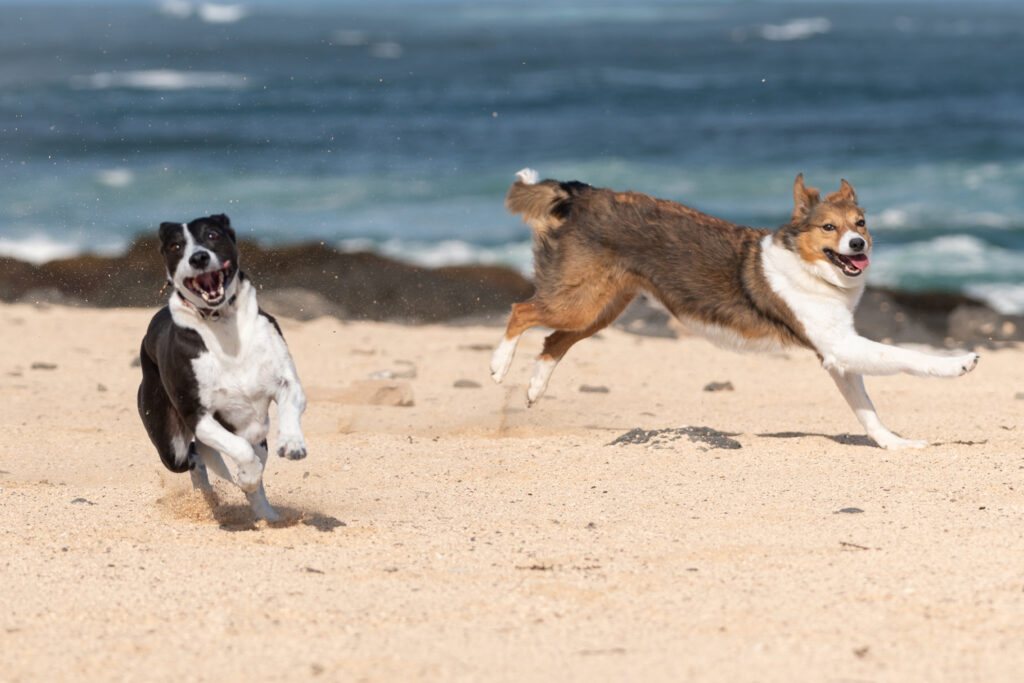

Food and treats
When we first started travelling in the van we very quickly came to the conclusion that traditional water bowls were no good when moving around. We would either have to pour water out and refill which uses valuable resources or they would slide and spill inside the van. Via suggestions on Instagram we were recommended to get a ‘Road Refresher Prestige Non Spill Pet Water Bowl’. It has been absolutely fantastic and we would suggest them to anyone thinking of travelling with their dogs. We can keep a lot of water in the bowl at all times and we don’t get any spills. We introduced this whilst still living in the house over a period of a few weeks before swapping out their traditional water bowl entirely. Being plastic the bowls are also very light and durable which is a big plus for living on the road. For the reasons above we also swapped out their heavy ceramic food bowls for lighter and stronger stainless steel ones.
Some dogs have particular dietary requirements which may, or may not be feasible to continue whilst living on the road. For instance, it might be much harder to store frozen raw foods vs bags of dried kibble. Accessibility of food also needs to be considered ie. Can you walk into a supermarket or pet shop and pick up fresh supplies. Ordering niche supplies online can be hard when you don’t have a fixed address. As we have a raised fixed bed in our van we have ample storage for storing large bags and trays of dog food. We normally have enough kibble and wet food on us to go several weeks at a time. We appreciate some vans have much more, or far less in terms of storage so this should be considered when planning how to use your space.
Our dogs eat a mixture of both kibble and wet food. Prior to moving in fulltime we gradually changed the way in which they were fed and reduced their mealtime down to once a day. This made our mornings far more flexible when travelling and moving between locations – we’ll always feed them at a similar time in the evenings each day and they have regular snacks and treats (probably too many)
The bulk of our girls diet comes from Forthglade. They’ve been on this for years but we recently had the opportunity to try some of the new range which they kindly sent out to us. We’ve found Forthglade is an easy choice, not only because the dogs love it but because it’s very accessible when moving around between locations. They have over 1500 independent UK pet shops as stockists and the brand can be found in all major supermarkets or online. If you’re interested in the company or its range we’ll leave some more information at the bottom of this post.*
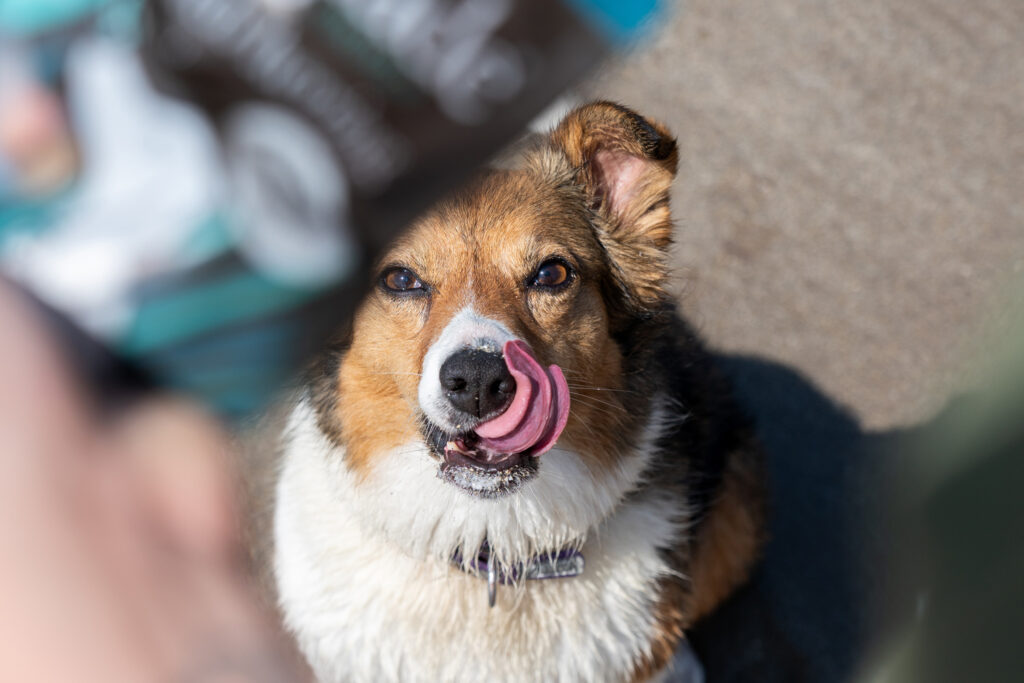
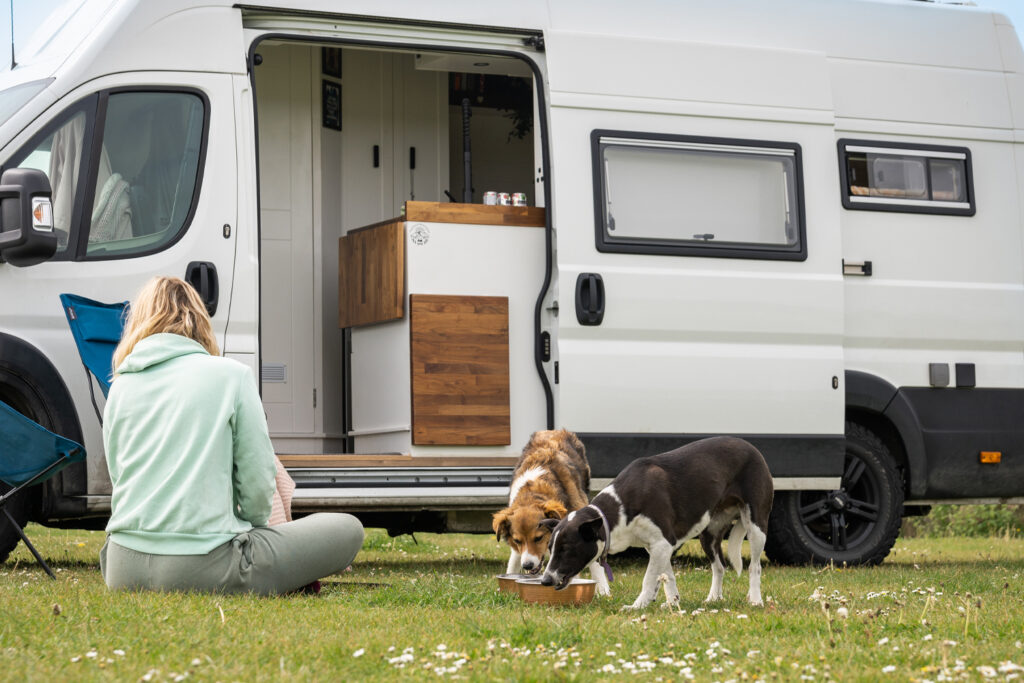

Temperature control
Regulating the temperature of the van was a big consideration for us when we were at the build stage, not only for our own comfort but that of the dogs. We made a few decisions on specific products to help with this.
Firstly we decided to install two MaxxAir Fan Deluxe roof vents with integrated fans. These fans are particularly good as they have settings to both push and pull air. Having these installed allows us to circulate a lot of air throughout the van during the warmer days, and helps remove moisture in winter when the dogs and towels are damp after walks. These fans also have rain covers which means you can use them all year round and in poor conditions without affecting their performance. Many heating systems will also have a vent mode which pulls outside air into your van without the element or burner running. This will use power from your batteries but it’s also only likely to be used on hot days when you are generating reasonable amounts of electricity from your solar setup.
Another way to help reduce heat from direct sun entering the van was with our choice of windows. Instead of fitting glass windows, we opted for Dometic Seitz S4. Not only are we a big fan of the integrated reflective blinds and flyscreens but we also like the fact they are thermally insulated and don’t get as hot as the glass windows we had in previous vans.
For those days when it’s really pumping heat we use an external insulated Silver Screen to cover the windscreen. It’s important to get this on early in the day before the glass gets hot or just leave it on overnight. These brilliant screens are made in the UK and make a huge difference to the temperature inside the cab which can become a greenhouse on sunny days. They also massively reduce any condensation during winter. We’ve purchased two of these for our last two vans and rate them really highly. You can find the company here.
Creating your own, or utilising existing shade is also a fantastic way to help keep your dogs comfortable. Most smartphones have a built-in compass so it’s easy to quickly check the suns direction throughout the day. Parking under trees or in sheltered areas will make a dramatic difference to the inside temperature of the van. When we are parked up on sites or campsites we have an external Moonshade awning which we attach to the van. We can also use our Vango Airbeam windbreaks to block the sun – regardless of doing this the dogs will quite often crawl underneath the van to lie where the ground is cooler. Our last gadget is for monitoring temperature and humidity both in and outside the van. For this we use a device from a company called SensorPush, we’ve previously mentioned these in our ‘Our van build electrical system post.’ These sensors can act independently via Bluetooth or as part of a remote system over WiFi. We’ve had these installed in the van for nearly two years now on the original batteries and they are great. You can set threshold alerts for temperature for both a high and low point and the sensors will alert our phones if the van goes above or below these. We really like being able to keep an eye on this during hot days when we are away from the van with the dogs inside.
Regardless on what we do to keep the girls cool during hot days, their favourite thing to do is to find water to paddle and swim in.
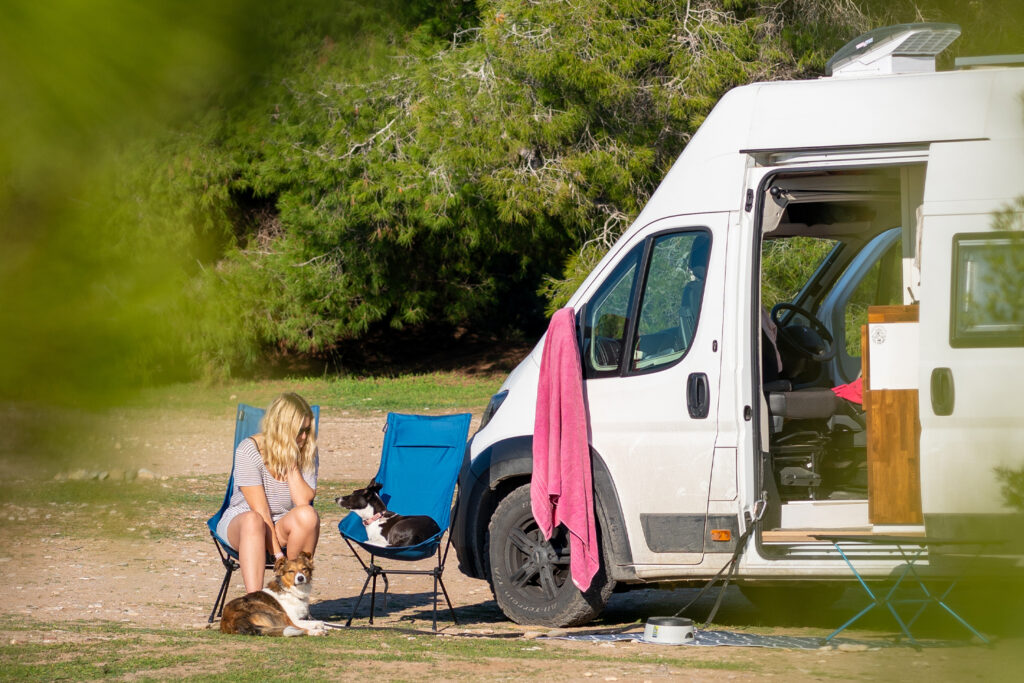
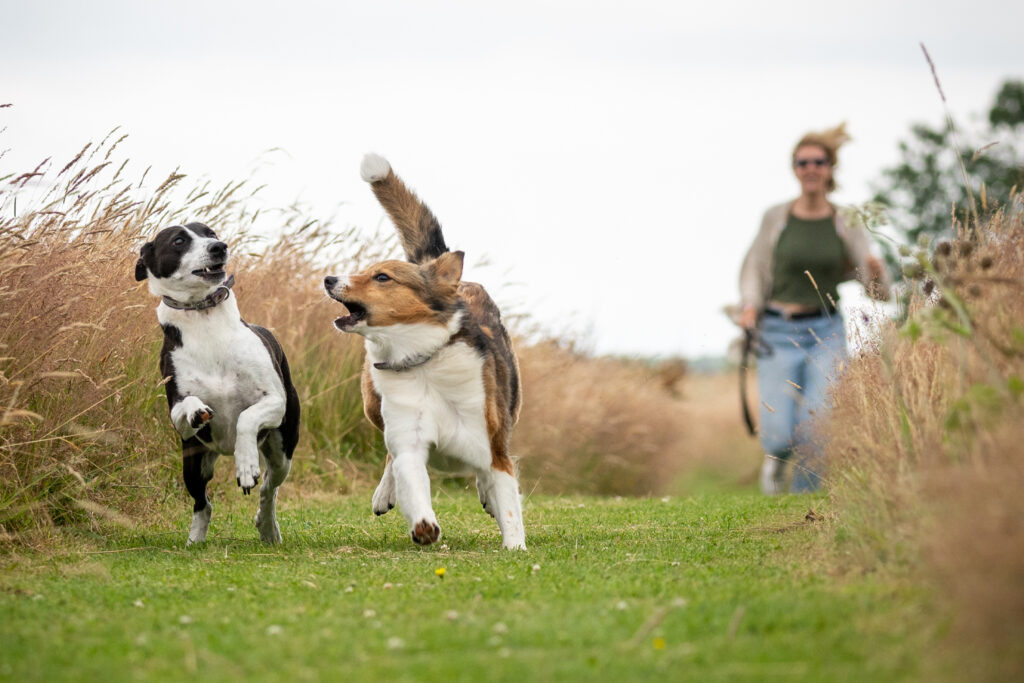
Healthcare and grooming
Fortunately, or unfortunately, depending on how you look at it, non of our dogs require any specific grooming routines. Rory requires fairly regular brushing but we just do this ourselves using a FURminator brush. We also clip their nails when required. Some breeds, however, will require regular clipping or haircuts. It will be important to plan this in advance if relying on groomers as often they have long wait times and don’t have capacity for walk ins. Although it’s worth noting that some pet stores have in house grooming, where you can often get a quicker appointment.
Another thing to consider is access to vets. We’ve kept Rory and Jeannie registered with the vets they were with in South Wales prior to us moving into the van. For things like jabs and boosters, we have made appointments and travelled back to the area for these. For those infrequent but inevitable emergency situations, it is good to know where local vets or animal hospitals are located. When staying on sites information like this is normally provided to you but when you’re wild camping and moving frequently you will have to do your own research. Since adopting Rory we have had 3 emergency vet visits, one of these she was admitted for several days. For those situations, we also recommend having good insurance to help cover the vet bills (they get really big, really fast). It is also worth noting that some vets will apply an additional charge if you are not registered with them.
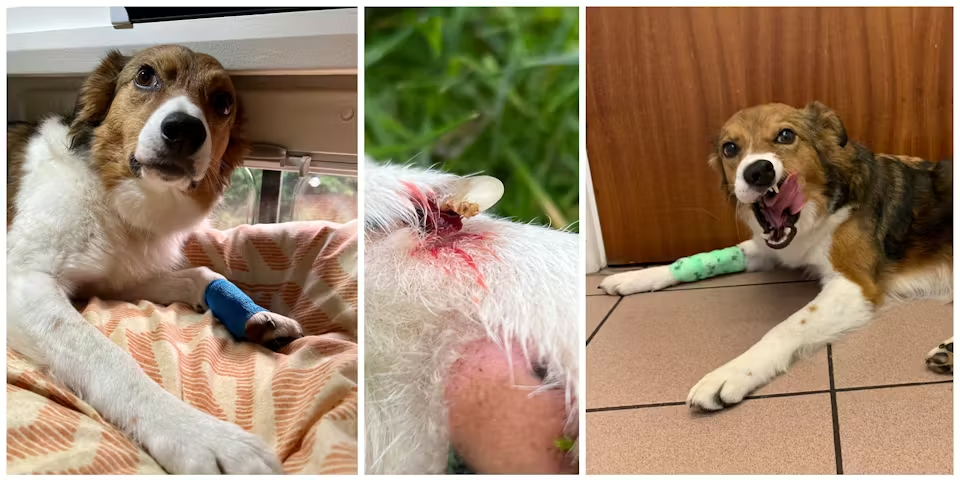
Security for your dogs
For when we are stationary and away from the van we have added some additional security measures. For obvious reasons, we won’t go into too much detail on this one, but two of our functional deterrents are additional deadlocks on every door of the van and cameras for monitoring the dogs whilst we are away from them. Having a camera permanently attached to a WiFi connection in the van is a great way to make sure the dogs are safe and comfortable. Most of the time checking in on them results in a video or photo of them passed out on the bed, with their paws in the air!
When the van is parked up and we are all together we have two metal D rings mounted into the van for attaching leashes too. One on the main sliding door and one at the back of the van for when we are hosing them down with the outdoor shower. We use a carabiner and a lead splitter from this which we can quickly connect/disconnect their leads. Depending on where we are, we tend to keep the dogs attached to the van, this allows them to go in and out as they wish but also reduces any potential accidents or escapes if they see or smell something interesting. When staying on small sites or CLs we tend to research ones that have access to private land, dog walks or dog walking areas inside of them so the girls can enjoy off lead time.
When travelling with your dogs there are multiple solutions available, largely depending on whether your dogs like to ride upfront with you or in the back of the van. The most popular solutions are to use seatbelt mounts which can connect to your dogs collar or harness whilst driving. Alternatively, if you have a purpose-built space within your van you could use crash tested crates which have been integrated into your build.



